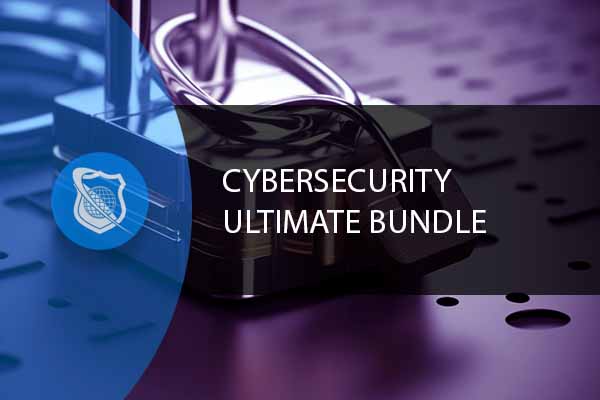What Is 3D Printing?
3D printing, also known as additive manufacturing, refers to a process of creating three-dimensional solid objects from a digital file. The creation of a 3D printed object is achieved using

In the realm of cybersecurity, comprehending the stages of a cyber attack lifecycle is vital for robust defense mechanisms. This blog dives deep into each stage of the cyber attack lifecycle, with expanded details and real-world examples. We’ll also discuss strategies for preventing or disrupting these attacks.
Reconnaissance is the initial information-gathering phase. Attackers scout for vulnerabilities in their target’s systems, network infrastructures, or employee behaviors. This stage can be broken down into several key activities:
During this stage, attackers are meticulous and patient, often spending weeks or months mapping out their approach.
In the 2013 Target Corporation breach, attackers spent considerable time understanding the third-party vendor systems used by Target. They meticulously gathered details about the HVAC system provider, eventually finding a weak link that allowed them access to Target’s network.
In the weaponization stage, attackers create or adapt a malicious payload, tailored to exploit known vulnerabilities. This process often involves:
This stage is critical, as the effectiveness of the attack largely depends on the quality and stealth of the weaponized payload.
Stuxnet, discovered in 2010, was a sophisticated weaponized malware. It specifically targeted Siemens industrial control systems used in Iran’s nuclear program, exploiting four zero-day vulnerabilities. It was meticulously crafted to disrupt uranium enrichment by subtly altering the speed of centrifuges.

Embark on a Thriving Cybersecurity Career! With our Ultimate Cyber Security training courses, you’ll dive into the world of ethical hacking, penetration testing, and network security. Our 15 comprehensive courses, led by industry experts, will equip you with essential Cybersecurity skills, setting you on the path to success in this ever-evolving field.
The delivery phase is where the weaponized payload is transmitted to the target. This can be done through various methods:
The delivery method chosen usually depends on the target’s profile and the type of vulnerability being exploited.
In the WannaCry ransomware attack of 2017, the delivery was executed through a phishing campaign. Emails contained links that, once clicked, initiated the download and installation of the ransomware. This attack took advantage of vulnerabilities in outdated Windows operating systems.
Exploitation is the phase where the actual attack occurs. The malicious payload, delivered in the previous stage, activates and exploits vulnerabilities in the target’s system. Key aspects of this phase include:
The goal of this stage is to establish a foothold in the target’s system, setting the stage for further malicious activities.
The Equifax data breach in 2017 is an example of this stage. Attackers exploited a vulnerability in the Apache Struts web application framework used by Equifax. This allowed them to gain unauthorized access and eventually led to the compromise of personal data of millions of individuals.
Once the attacker has successfully exploited a vulnerability, the next step is to ensure persistent access to the target system. This stage involves:
The installation phase is critical for maintaining long-term access and control over the compromised system.
In the Sony Pictures hack of 2014, attackers not only stole data but also installed malicious software that erased data from Sony’s servers and rendered them inoperable. The malware was designed to establish a foothold in the network, allowing for continued access and control.
The Command and Control stage is where the attacker establishes a remote command channel to control the compromised system. Key activities in this phase include:
This stage is crucial for attackers to direct their next actions based on the initial success and the data gathered from the compromised systems.
The Dridex banking malware, widely spread through phishing campaigns, is known for establishing robust C2 channels. Once installed, it allowed attackers to steal banking credentials by issuing commands to compromised systems.

If you’re looking to truly realize the full potenital of using Microsoft Power BI, ITU offers an excellent course designed to teach you all about using this exceptional reporting too.
The final stage of the cyber attack lifecycle is where the attacker achieves their primary goal. This could be:
The specific objective depends on the attacker’s intent, which could range from financial gain to geopolitical influence.
The infamous NotPetya attack in 2017 initially appeared to be ransomware but turned out to be a destructive attack aimed at Ukrainian infrastructure. It quickly spread worldwide, causing significant disruption and financial losses.
To defend against these stages, organizations must adopt a multi-layered security approach. This includes:
Detecting a cyber attack in its early stages is crucial. Enhanced reconnaissance detection involves:
To defend against the delivery of weaponized payloads, organizations should:

Propel your career forward and be part of an essential member of any management team as an Information Security Manager. This advanced training series is designed specifically for those want to move up into a management position in the IT field.
Reducing system vulnerabilities is key to preventing exploitation:
Detecting and responding to the installation of malicious software involves:
Breaking the communication between attackers and compromised systems is crucial:
The final line of defense is to prevent attackers from achieving their goals:
Implementing these strategies requires a combination of technology, processes, and people. By adopting a proactive and layered approach to security, organizations can significantly enhance their defenses against the evolving landscape of cyber threats.
The cyber attack lifecycle, also known as the “cyber kill chain,” is a model that describes the stages a cyber attacker goes through to successfully compromise a network or system. It typically includes stages like reconnaissance, weaponization, delivery, exploitation, installation, command and control, and actions on objectives.
Understanding the lifecycle helps organizations identify potential threats at each stage, implement effective security measures, and develop strategies to detect, prevent, and respond to cyber attacks. It allows for a more proactive approach to cybersecurity.
Yes, a cyber attack can potentially be stopped at any stage of the lifecycle. Early stages like reconnaissance and weaponization are more challenging to detect, but strategies like enhanced threat intelligence and monitoring can be effective. Later stages like delivery and exploitation can be countered with robust defense measures like antivirus software and regular system patching.
Common methods include public data harvesting, network scanning, and social engineering tactics like phishing. Attackers gather information about the target’s systems, employees, and network defenses to plan their attack.
Organizations can prepare for cyber attacks by implementing a layered security approach, including regular system updates and patching, employee training, robust security policies, advanced threat detection systems, and regular security audits. Preparing an incident response plan and conducting regular security awareness training are also crucial.
Lorem ipsum dolor sit amet, consectetur adipiscing elit. Ut elit tellus, luctus nec ullamcorper mattis, pulvinar dapibus leo.
$49.99 Original price was: $49.99.$16.99Current price is: $16.99. / month with a 10-day free trial
3D printing, also known as additive manufacturing, refers to a process of creating three-dimensional solid objects from a digital file. The creation of a 3D printed object is achieved using
Access Management refers to the processes and technologies designed to control and manage access to information and systems within an organization. It plays a critical role in ensuring that the
An Ad Hoc Network is a decentralized wireless networking paradigm that allows individual devices to communicate directly with each other without relying on a pre-existing infrastructure, such as routers or
Adaptive User Interfaces (AUIs) are intelligent systems designed to improve user interaction with software applications by automatically adjusting their layout and elements based on the user’s needs, preferences, and context.
Adobe Photoshop is a powerful digital imaging and graphics editing software developed by Adobe Inc. It’s widely recognized as the industry standard for raster graphics editing, used by professionals in
Agile Business Analysis (ABA) is a methodological approach that focuses on delivering business value by integrating business analysis processes with agile principles. It emphasizes flexibility, continuous improvement, and close collaboration
Agile Project Portfolio Management (PPM) is an approach that aligns project, program, and portfolio management practices with agile methodologies. It focuses on flexibility, continuous improvement, and the ability to adapt
Agile Test Automation refers to the practice of automating the testing process in an agile software development environment. It aims to enhance the efficiency and effectiveness of testing by automating
AI Governance is a framework or system designed to ensure the responsible development, deployment, and use of artificial intelligence (AI) technologies. It encompasses a broad set of policies, principles, and
Algorithmic bias refers to systematic and repeatable errors in a computer system that create unfair outcomes, such as privileging one arbitrary group of users over others. This bias can originate
Amazon Web Services (AWS) is a comprehensive, evolving cloud computing platform provided by Amazon that includes a mixture of infrastructure as a service (IaaS), platform as a service (PaaS), and
Continuous Data Protection (CDP), also known as real-time data protection, refers to the method of backing up data by automatically saving a copy of every change made to that data,
ENDING THIS WEEKEND: Train for LIFE at our lowest price. Buy once and never have to pay for IT Training Again.